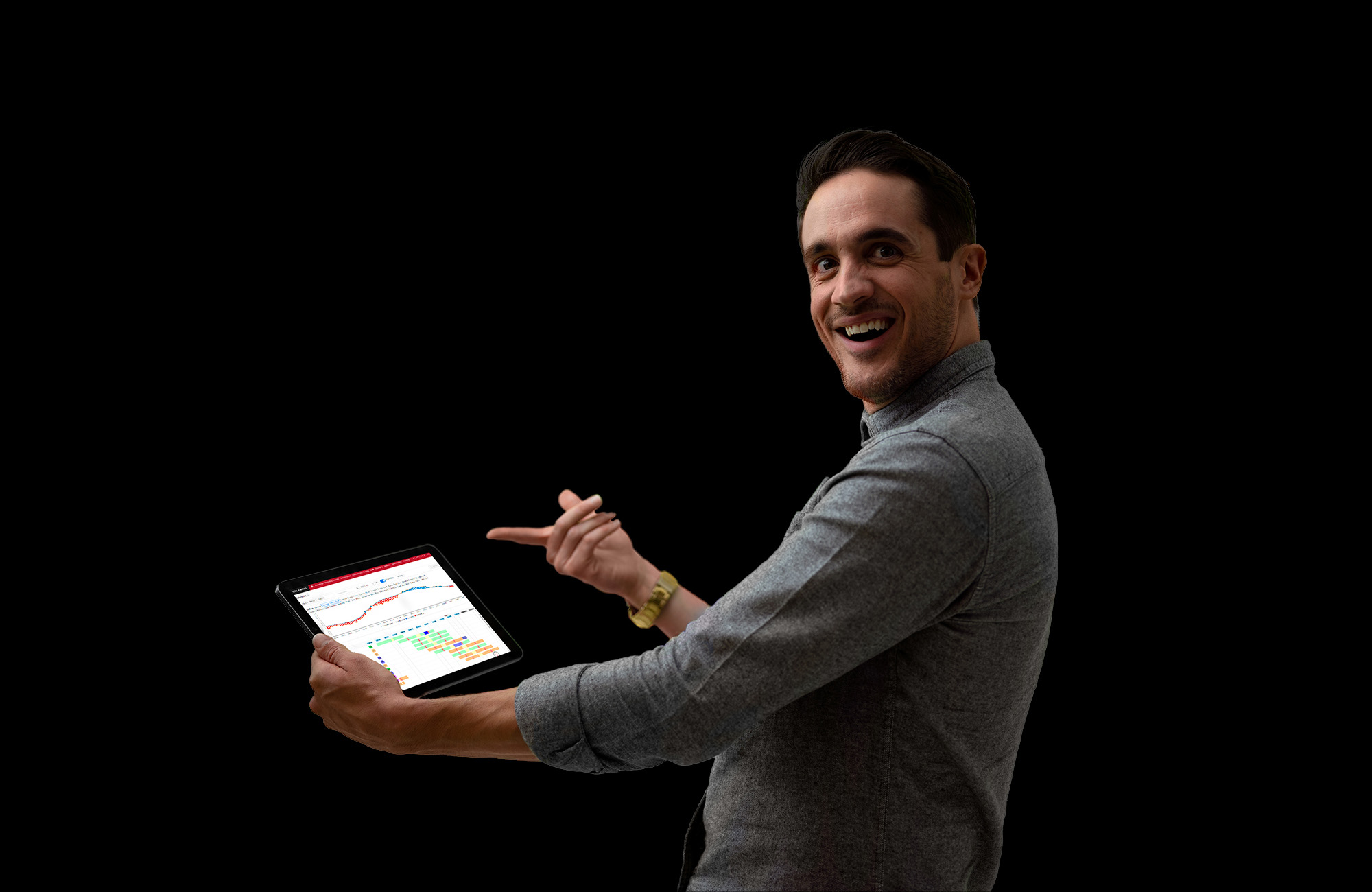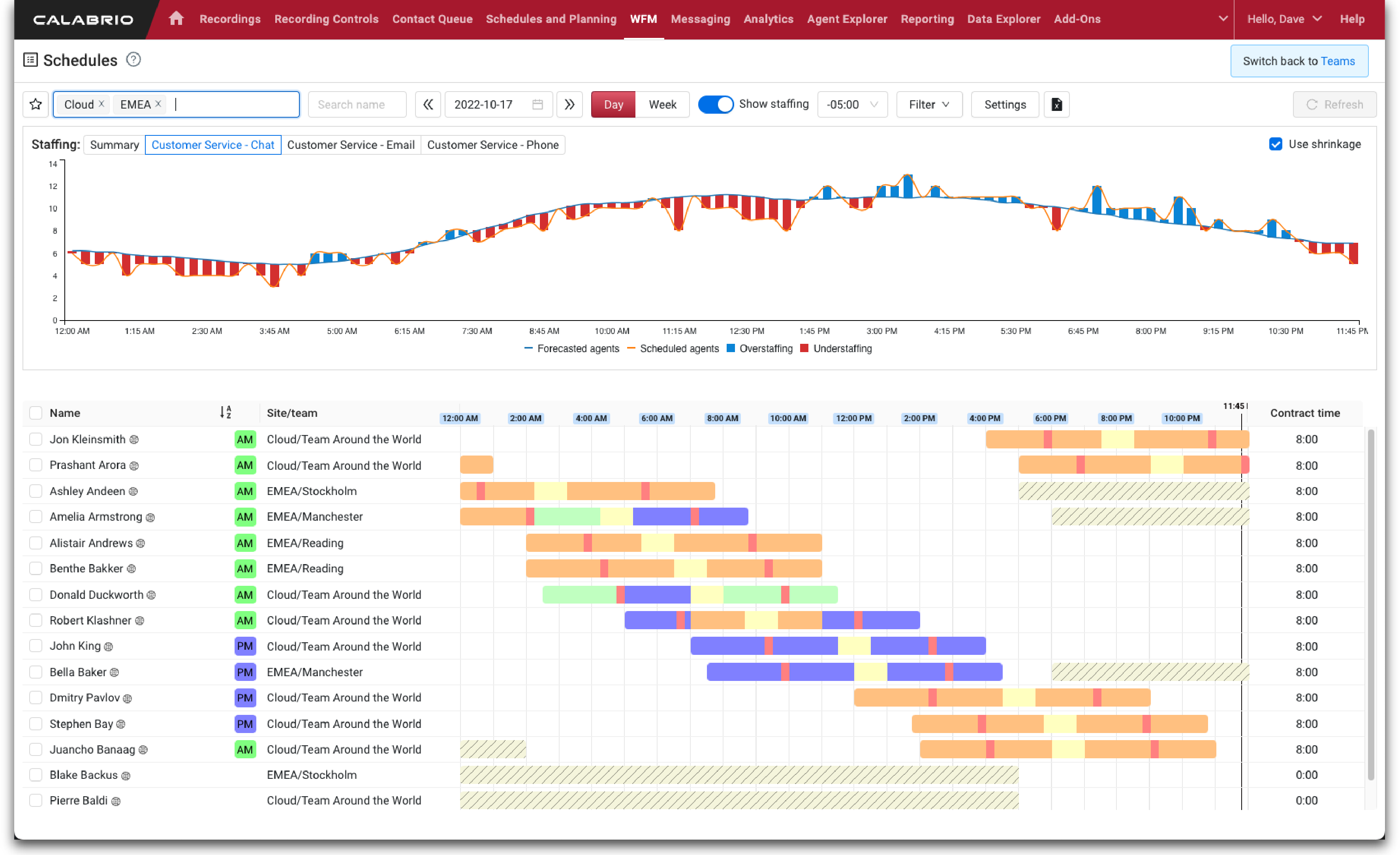Make the Most of Your WFM Forecasting Process
Make the Most of Your WFM Forecasting Process

Make the Most of Your WFM Forecasting Process
The forecasting process in a contact center is the single most important thing to do if efficiency and accurate reporting are the top goals. An accurate forecast informs every single aspect of the contact center and ensures that budgets, staffing, and CX will be properly addressed.
In this Calabrio Shorts episode, Dave Hoekstra and Matt Osgood, Solutions Engineer at Calabrio, discuss helpful tips for generating a more accurate workforce management (WFM) forecast. Read on to learn some useful tips to leverage your historical data and make adaptations as needed.
Building an Accurate Forecast Starts with the Basics
One of the most commonly overlooked aspects of creating accurate forecasting models is paying attention to historical data. Historical volume data should be properly aligned with expectations and scrubbed for anomalies. What does this mean?
- Compare the number of interactions (calls) received against the expected number (forecast). If the actual significantly deviates from the expectation (+/- 15%), the anomaly should be investigated.
- Maybe there was a promotion that ran that wasn’t expected, or maybe there was an outage that caused heavy call volumes.
- These unexpected anomalies should be scrubbed from the forecast, as they can pull the averages in the wrong direction, affecting future historical comparisons.
- Expected anomalies should be set aside in their own special forecast. These are repeatable, expected events such as Black Friday, holiday closings, or the day of the month that customers receive their bills.
Building a forecast without removing or smoothing anomalies can have a dramatic effect on your accuracy, often to the tune of 20-40% swings in the wrong direction. Taking the time to accurately identify historical data anomalies is a big step towards improving the accuracy of a forecast.

Sharing Information Is Key to the Forecasting Process
The other critical step in creating accurate forecasting models is to be informed. This involves meeting with other departments of the organization to understand what their decisions will do to the contact center’s volume. Communication is key with marketing, sales, operations, shipping, and any other department. Some ways to increase communication between departments include:
- Set up recurring meetings with other departments to discuss the calendar and what is expected
- Look at historical data for the last time the event occurred to understand how it might affect the forecasting model
- Help the other departments understand what an unexpected swing in volume can do to the health of the contact center
By improving communication channels throughout the contact center, your organization will be better prepared to share information. All of this is essential for the forecasting team to improve forecasting techniques and accuracy.
Select the Right Historical Data
The historical data you put into your forecast is the most crucial piece to ensure its accuracy. There is no “Industry Standard” for how much data to use. It could be 1 week, 1 month, 1 year, or 10 years. It all depends on your organization. If you have recently overhauled your routing, older data might no longer be as useful. This is where knowing your business will help you determine what data is right to use.
An important step in creating an accurate forecast is choosing the proper data that informs the forecast. If your data is clean from anomalies, the next step is to choose the historical time period(s) that most accurately represent the future time period. Aside from accurate historical data, this might be the most important skill of a good forecaster. Ask questions that help understand the time period and then hunt down the data.
Forecasting Methods to Improve Greater Accuracy
If the time period to be forecasted is long (>3 months), more data is important to account for data trends. This includes seasonality or long-term growth. For example, if the forecast is for next year, 2+ years of data would be optimal to account for seasonality and quarterly trends. However, if the last 2 years of data included a significant change to volumes (Covid-19, anyone?), it might be more beneficial to exclude that data.
Now, if the time period to be forecasted is rather short—a specific week or day, for example—, more specific historical data might be needed. For example, if the forecast is for the week after Christmas, the best data to use would be only the week after Christmas from the last 2 years. This forecasting technique uses relevant data to improve forecast accuracy.
Ultimately, the decision of which data to use can have a dramatic effect on the forecasted time period. Choosing the right data is absolutely critical to the success of the forecast.

Creating a Forecast from Scratch with no Historical Data
When you need to create a forecast but don’t have any data to pull from, where do you start? Often, this requires some creativity. Is there an existing forecast that is similar to what is expected? If so, pull your information from there.
Existing patterns, even just a week, can give enough data to get started with your forecasting process until better data is available. Remember, even a “best guess” forecast is better than no forecast. Plus, there will be real data to pull from soon.
Blending Art and Science
Building a forecast for the contact center is not a purely mathematical exercise. It often involves managing different people, personalities, and data that might not exist. Assumptions have to be made on occasion, and even the best Excel spreadsheet doesn’t know how human beings will react to different scenarios.
Predicting when a call will land within a 15 or 30-minute interval is essentially impossible, so being able to adjust and improvise can be a desired trait in a good forecaster.
This is why the phrase “forecasting is a blend of art and science” is often heard in forecasting circles. Understanding that not everything will land in a formula, algorithm or calendar is critical to building the best forecast possible. Understanding that even the best forecasts can be obliterated by the silliest factor (What do you mean that marketing forgot to tell us they were emailing out a 50% off coupon?!?) is just part of the job. Taking a step back from the data and asking good questions can often lead to the best understanding of how a forecast can be impacted.
The Right Software
The art of forecasting is very important, but the science part shouldn’t be ignored either. Investing in the right software is a huge factor in getting greater forecasting accuracy. The four main characteristics of good forecasting software are as follows:
- It allows the user to easily clean the historical data
- It allows for multiple date ranges to be selected for accurate forecasting
- It provides information in a readable and flexible format, making changes and adjustments easy
- It provides accurate staffing estimates based on the forecasted data (this is the whole point, right?)
- It offers good reporting tools (enabling visualizing findings for top management)
For most contact centers, the primary goal is balancing customer service and service level goals while minimizing staffing costs. Staffing typically comprises 70 to 80 percent of a contact center’s budget. The best way to stay within budget is to prevent understaffing and overstaffing. It’s easy to see why many contact center leaders believe good forecasting is the foundation of contact center scheduling.

Using the Right Software Improves Forecasting Methods
The good news is that Calabrio WFM meets all of these requirements! There are so many benefits to having greater forecasting software. It helps business staff prepare budget estimates and meet anticipated service levels at any time. It also empowers analysts to create reliable schedules that place the right agents, with the right skills, at the right time. Plus, it even builds better brand guardianship and customer experiences.
Although accurate forecasts take commitment, effective workforce management (WFM) software can significantly help you learn from unexpected events, sift through extensive historical data, and improve predictions next time. If you’re looking to improve your WFM forecasting process, watch a demo today to learn more about Calabrio WFM.









